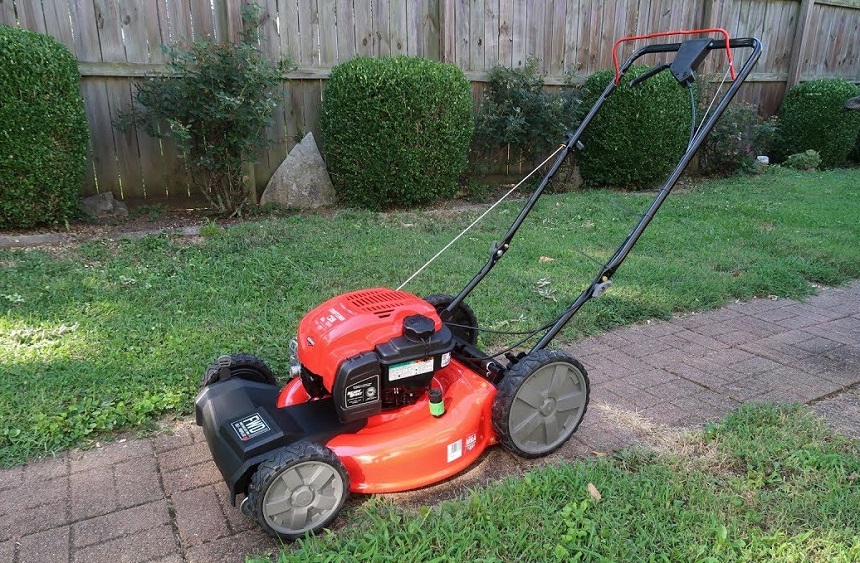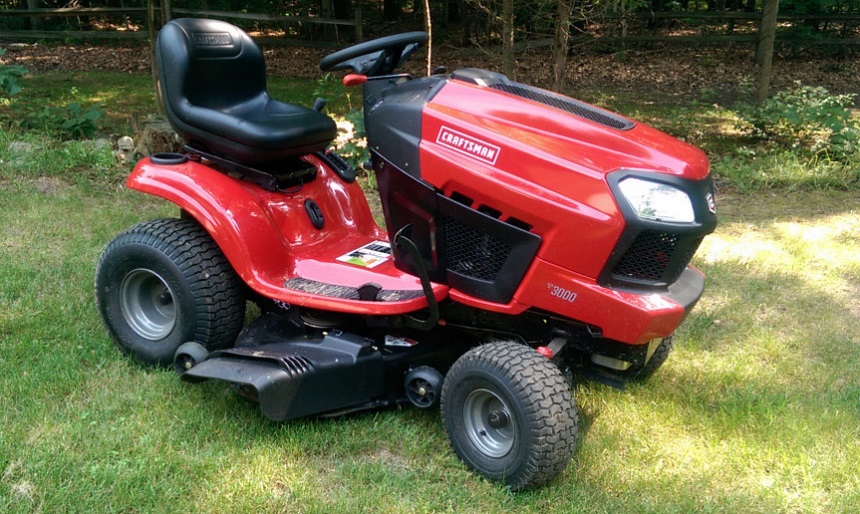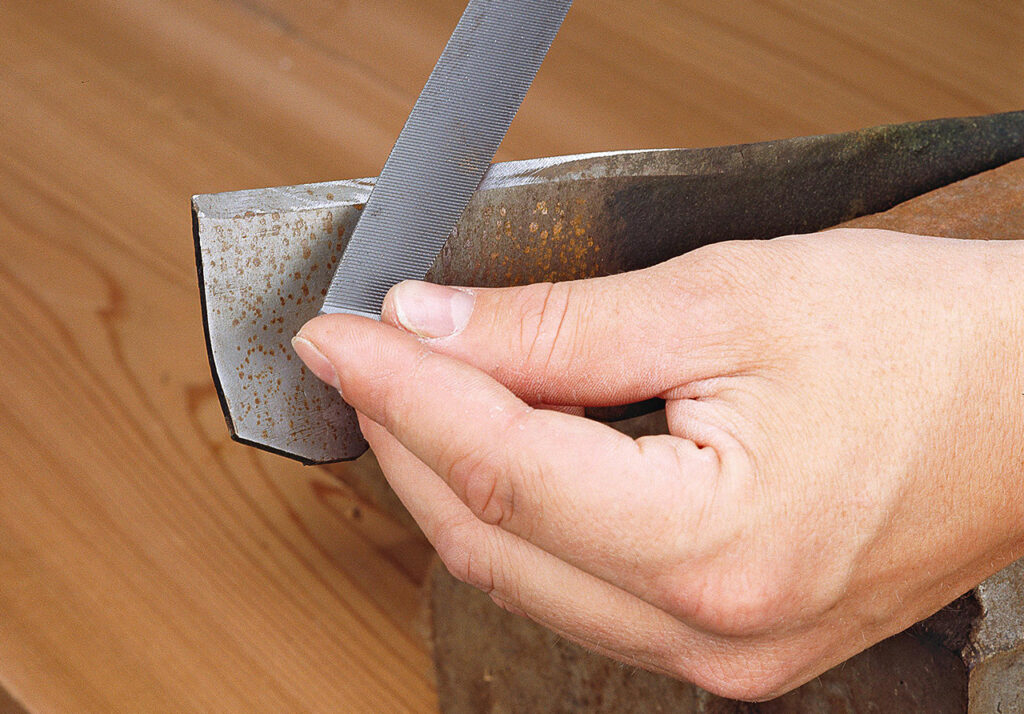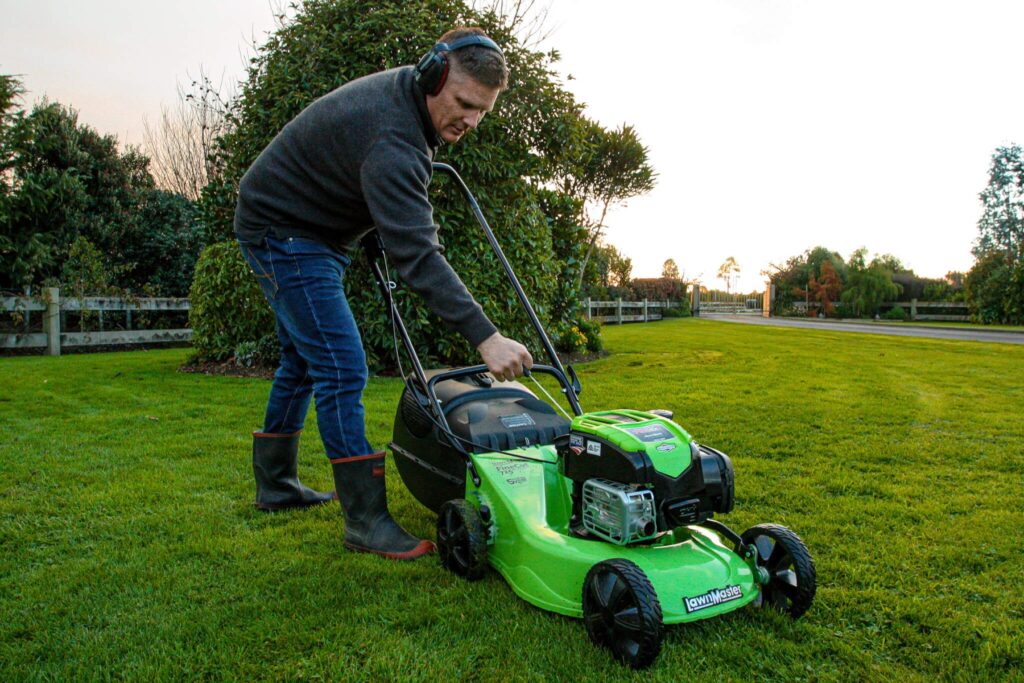If you’re in the process of buying a Craftsman lawn mower or have already bought one, you’ll have discovered there are two types to pick from. One is the push or walk-behind lawn mower specially designed for small gardens. The second type is a riding mower used for mowing larger areas.
Starting a push lawn mower is slightly different from starting a riding mower. Knowing how to start a Craftsman lawn mower is important if you want to protect this piece of equipment from being damaged. Starting your lawn mower correctly will also extend its lifespan while minimizing the costs of unnecessary repairs and maintenance. We’ve put together a simple guideline for how to start a push lawn mower and a riding mower. Using these steps will give you peace of mind you’re starting your Craftsman lawnmower the right way, protecting your garden equipment investment from day one!

Starting a gas-powered Craftsman push lawn mower is similar to most other walk-behind mowers. Preparation before switching on the machine is key for a properly functioning lawn mower. Once this step has been completed, you’re ready to begin the process of turning on your machine.
Before starting your push lawn mower, you need to take the following steps:
When you’re done preparing your lawnmower, you can go ahead with starting it. Make sure it’s on a flat surface before going through the process of switching it on.
Before starting your machine, the throttle lever should be in the “Stop” position. Move the throttle lever into the “Choke” position when you’re ready to start your lawn mower. The auto choke will be activated at this stage.
Grab the handle of the starter rope, which is located on the right-hand side of the lawn mower. Using brisk, full-arm movements, pull the starter rope once to three times, letting the rope rewind fully each time before pulling again. Once engaged, the lawn mower will start.
On starting, the engine will run roughly. This is because the throttle lever is still in the “Choke” position. At this stage, you need to move the throttle lever to the “Run” position. Your lawn mower machine should start running smoothly, allowing you to cut the lawn steadily.

Follow these steps when using riding lawn mowers to keep your yard in top-notch condition!
Never turn on a Craftsman riding lawn mower when not seated on it. Make sure you’re sitting comfortably in the seat.
Use your left leg to press down on the foot brake. This is located on the front bottom of the machine on the left-hand side. Keep your foot on the brake until you have started the lawn mower. You’ll need to gently release the pressure from the foot brake when activating the “Parking mode.”
Depending on the model, you’ll find the parking brake on the left or right-hand side of your seat. Place it into “Parking mode’ while slowly removing your leg off the foot brake. It’s important to keep the parking brake engaged before starting the lawn mower but remember to disengage it when you’re ready to start moving the machine.
You’re now ready to activate the neutral gear. The gearbox of a Craftsman’s ride-on lawn mower is located next to the steering wheel. The marking “N” on the gearbox indicates the neutral position. Position the gear level at this point.
To prevent the riding mower from moving forward or in reverse while starting the machine, you need to press the throttle lever into the “Choke” position. And now you can turn on the mower.
Insert the lawn mower key into the ignition switch. This is normally located on the front dashboard. Never force the key if it sticks. Remove and try it again but if it continues to stick, check for problems with either the ignition switch or the key itself.
With the key inserted into the ignition switch, rotate it to the right, holding it in this position for 15 seconds or longer if necessary. When you hear the engine starting, remove your hand from the key. Release your leg off the foot brake.
Press the throttle lever from the “choke” position to the “fast” position and disengage the parking brake. The riding mower will start to move forward. And, you’re all set to mow your lawn in comfort!
Whether you’re using a push lawn mower for a small-sized yard or a riding mower for larger gardens, you need to apply some caution Trusted Source Regulatory Summary Lawn Mowers Reel-type mowers do not need to meet the performance standards. However, both rotary mowers and reel-type mowers must have a label that warns about the danger of cuts and amputation from contact with the blade. www.cpsc.gov . Take note of the following safety tips:
Always read the instruction manual before using your lawn mower for the first time and follow the safety guidelines recommended by the manufacturers.
Following our guidelines will ensure you start your Craftsman push or riding lawn mower the right way. Preparation is vital, protecting both your machine and the operator. Push lawn mowers are easy to start once you know the process and follow the right steps. The same applies to riding mowers.
Knowing how to start a Craftsman lawn mower correctly is the first step to using this type of machinery safely. It also means your lawn mower will stay in good condition for longer, preventing you from the headache of paying for costly repairs. Taking good care of your Craftsman lawn mower investment is important. Do it right from the beginning, and make sure you start it properly the first time, every time!





